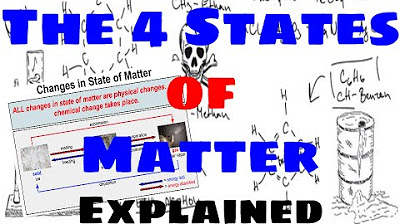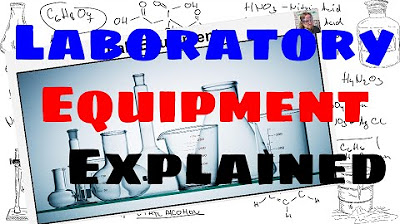Five Types of Subsistence Agriculture [AP Human Geography: Unit 5 Topics 1 & 10]
Summary
TLDRIn this educational video, Mr. Sin explores various forms of subsistence agriculture in the developing world, including pastoral nomadism, shifting cultivation (slash-and-burn), intensive subsistence agriculture with a focus on both wet and non-wet rice cultivation, and plantation farming. He discusses the environmental impacts, cultural practices, and geographical factors that influence these agricultural methods, providing viewers with a comprehensive understanding of agricultural diversity and its implications.
Takeaways
- 🌍 Mr. Sin introduces five types of agriculture in the developing world: pastoral nomads, shifting cultivation (slash-and-burn), intensive subsistence agriculture (wet and non-wet rice), and plantation farming.
- 🐫 Pastoral nomads are herders who move with their domesticated animals and primarily rely on grains for sustenance, which they often trade for or plant in specific locations.
- 🔥 Shifting cultivation involves clearing and burning land for crop planting, then leaving it to regenerate for several years before reusing, supporting small populations and being debated for its environmental impact.
- 🌾 Intensive subsistence agriculture is practiced in areas with limited land, focusing on maximizing food production, and is divided into wet rice and non-wet rice cultivation based on geographical and climatic conditions.
- 🌱 Wet rice cultivation is labor-intensive, with processes like land preparation, flooding, transplanting, and harvesting, often done without modern technology and by hand.
- ❄️ Non-wet rice agriculture is found in regions with harsh winters, leading to the cultivation of alternative crops like wheat or corn, and emphasizes crop rotation to prevent soil depletion.
- 🏭 Plantation farming is historically complex, often associated with slavery, and in modern times, it's operated by developed countries in the developing world for cost efficiency, focusing on one or two cash crops.
- 🌱 The script highlights the cultural and environmental factors influencing these agricultural practices, including government policies, technological advancements, and the potential decline of traditional methods.
- 🌐 The debate on the environmental sustainability of shifting cultivation versus the environmental impact of industrial alternatives like logging and cattle ranching is mentioned, showing the complexity of agricultural choices.
- 📚 Mr. Sin encourages viewers to use guided notes for study and to consider the broader implications of each agricultural method on society and the environment.
Q & A
What are the five types of agriculture discussed in the video?
-The five types of agriculture discussed are pastoral nomads, shifting cultivation (slash-and-burn), intensive subsistence agriculture (divided into wet rice and non-wet rice), and plantation farming.
Why do pastoral nomads primarily rely on grains instead of animal products?
-Pastoral nomads primarily rely on grains because they are not just randomly roaming; they have a set territory and get grains through trade. Their diet is not just based off of animals, and the majority of their diet is grains.
How does the practice of shifting cultivation impact the environment?
-Shifting cultivation can lead to deforestation and increased carbon dioxide emissions due to the burning of trees. However, the debate continues on whether this practice is more harmful to the environment than other forms of land use, such as logging or cattle ranching.
What is the main difference between wet rice and non-wet rice agriculture?
-The main difference is the geographical and climatic conditions they are suited to. Wet rice agriculture requires a warm and wet climate, while non-wet rice agriculture is practiced in areas with harsher winters that do not support rice production.
Why is crop rotation important in non-wet rice intensive subsistence agriculture?
-Crop rotation is important to prevent soil depletion, ensuring that the soil retains enough nutrients for successful crop yields, which is crucial given the limited land resources in intensive subsistence agriculture.
How does plantation farming benefit developed countries?
-Plantation farming benefits developed countries by providing them with cheap, bulk-produced goods. These plantations are often located in developing countries where labor and land are less expensive.
What is the role of technology in the types of agriculture discussed in the video?
-Technology use is minimal in the types of agriculture discussed. Most processes, such as tilling the land and harvesting, are done by hand, reflecting the subsistence nature of these farming practices.
Why are pastoral nomads on the decline according to the video?
-Pastoral nomads are on the decline due to factors such as government policies that encourage sedentarization, the push for land control, and the advent of new transportation and communication methods that make the nomadic lifestyle less viable.
What is the significance of the 'tragedy of the Commons' in the context of intensive subsistence agriculture?
-The 'tragedy of the Commons' is significant as it illustrates the potential overuse and depletion of shared resources, such as land, when individuals act in their own self-interest without regard for the common good. In the context of intensive subsistence agriculture, privatizing land can lead to better stewardship and prevention of soil depletion.
How does the video script suggest that the viewer engage with the material?
-The video script encourages viewers to use guided notes, take their own notes, and pay attention to the areas listed on the screen for each type of agriculture to enhance their understanding and preparation for quizzes or tests.
Outlines

Cette section est réservée aux utilisateurs payants. Améliorez votre compte pour accéder à cette section.
Améliorer maintenantMindmap

Cette section est réservée aux utilisateurs payants. Améliorez votre compte pour accéder à cette section.
Améliorer maintenantKeywords

Cette section est réservée aux utilisateurs payants. Améliorez votre compte pour accéder à cette section.
Améliorer maintenantHighlights

Cette section est réservée aux utilisateurs payants. Améliorez votre compte pour accéder à cette section.
Améliorer maintenantTranscripts

Cette section est réservée aux utilisateurs payants. Améliorez votre compte pour accéder à cette section.
Améliorer maintenantVoir Plus de Vidéos Connexes

The Four States of Matter - Explained

Lab Equipment - Explained

3. Gr 11 Life Sciences - Population Ecology - Theory 3 Mark Recapture Method

4. Gr 11 Life Sciences - Population Ecology - Worksheet 1

PENJASKES KELAS X - SOFTBALL

Introduction to Culture [AP Human Geography Review Unit 3 Topic 1]

Menentukan Mr ( massa molekul relatif )
5.0 / 5 (0 votes)
